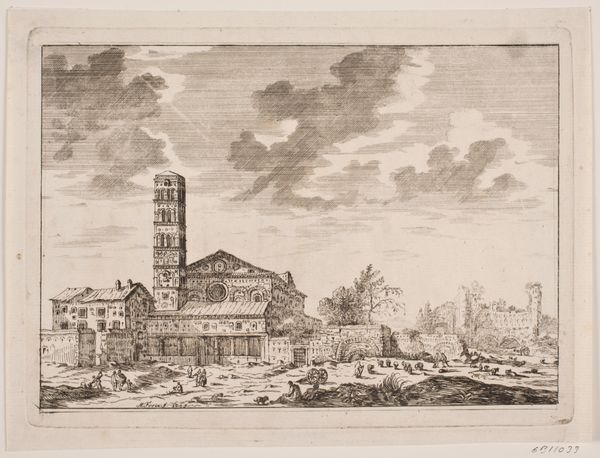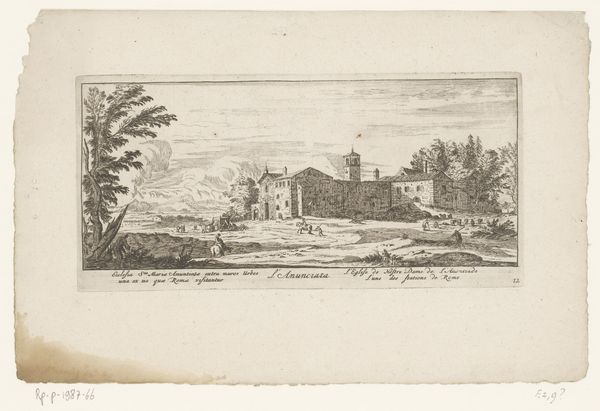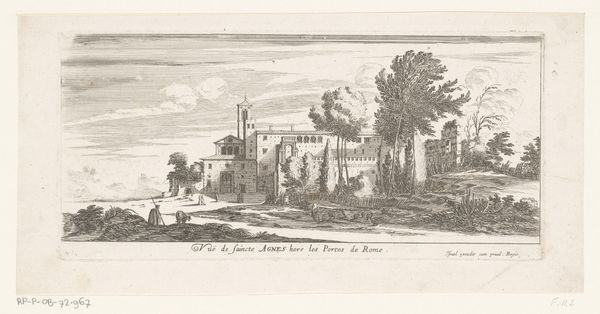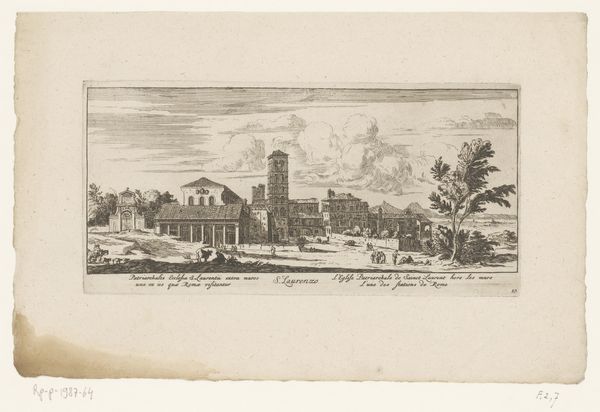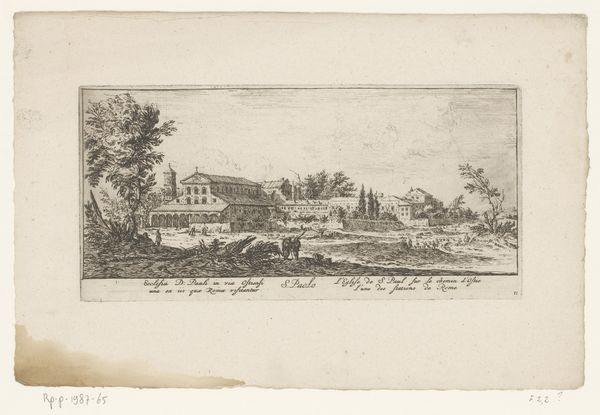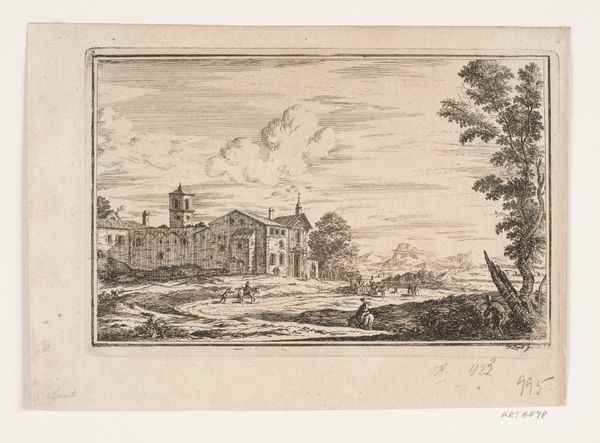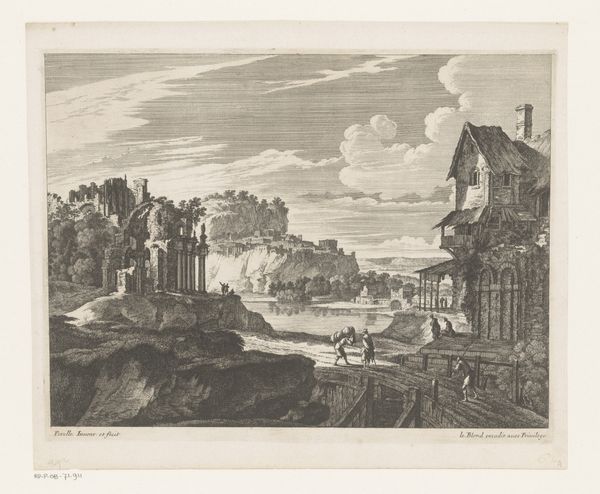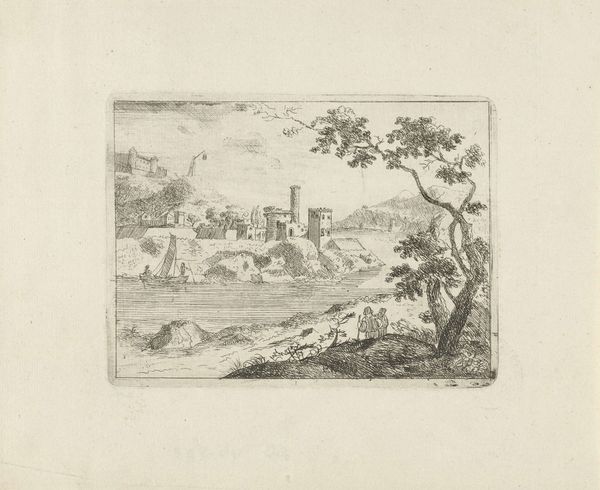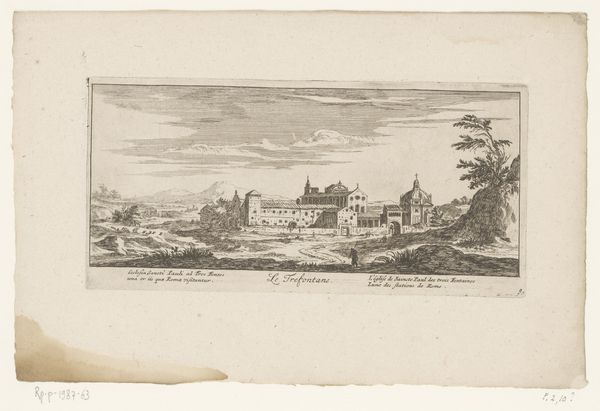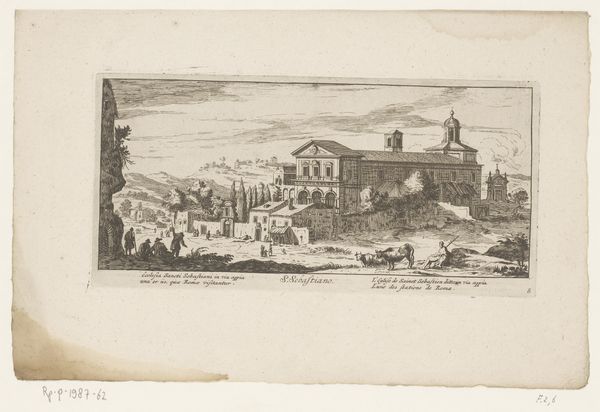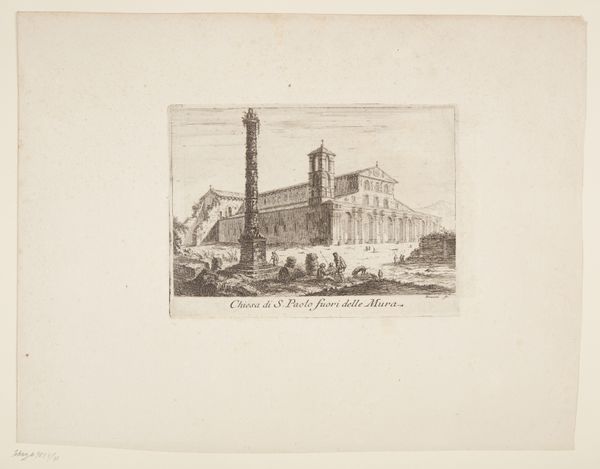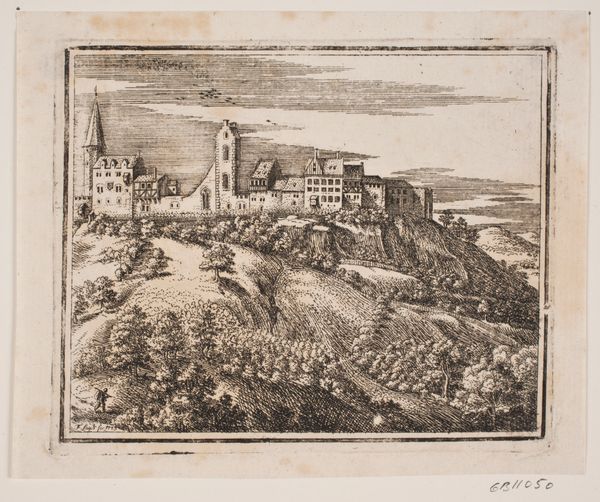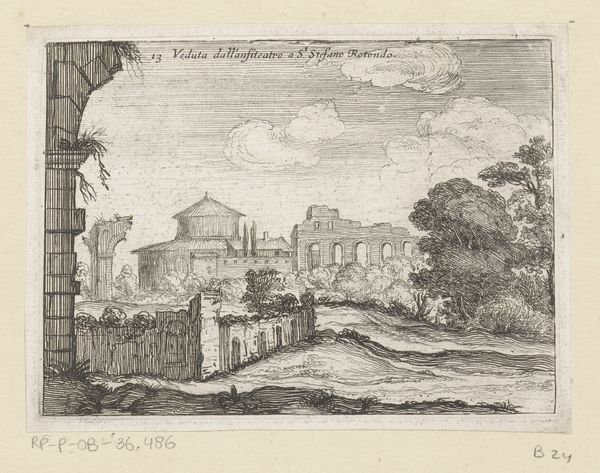
print, engraving, architecture
#
baroque
# print
#
landscape
#
cityscape
#
engraving
#
architecture
Dimensions: height 122 mm, width 253 mm
Copyright: Rijks Museum: Open Domain
Curator: Here we have an engraving from sometime between 1648 and 1712, entitled "Gezicht op de Santa Croce in Gerusalemme, te Rome," or "View of the Santa Croce in Gerusalemme in Rome." It is currently held in the Rijksmuseum. Editor: My first impression is one of somber resilience. The image seems to balance a reverence for the church's architecture with an acknowledgment of decay through the ruin on the left side. There is something timeless, almost stoic about it. Curator: It's compelling how the engraving places the church not as a pristine monument, but within the evolving urban and social fabric of Rome. Look at the subtle suggestion of human presence – figures rendered with quick, efficient strokes, yet essential to the scene’s dynamism. They suggest the church's continuous relevance in daily life. Editor: Exactly. And that architectural ruin—what is its significance? It disrupts the conventional idea of a pristine cityscape and adds a symbolic layer. Could it signify the transience of earthly power in contrast to the spiritual endurance of the church? I see echoes of vanitas motifs. Curator: Absolutely. The presence of decay and ruin speaks volumes about power dynamics, shifts in social and cultural values, even perhaps serving as a subtle commentary on the papacy itself. How does this historical placement challenge or reinforce ideas of sacred space? How has that shifted over time? Editor: Considering Santa Croce’s history, linked to relics of the Passion, the symbols are multilayered. The tower points heavenward, asserting spiritual authority, while the ruins speak of earthly fallibility. There is a dialectic, it's as if this landscape stages a continuous debate about faith and time, creation and destruction. It carries significant cultural memory about Rome’s layered past. Curator: This image presents itself as an architectural study, but the socio-political landscape is inseparable. As a reflection on Rome, it invites us to interrogate not just the Church’s structural dominance but its negotiated existence within society’s shifting sands. What roles did art like this play in shaping Rome's cultural identity and collective memory? Editor: This piece goes far beyond a mere depiction of a building; it captures a complex dialogue between time, power, and faith—reminding us that even seemingly straightforward cityscapes are rife with symbolic layers. Curator: Yes, it’s a profound study on resilience and context, revealing how architectural representation is never neutral, but actively involved in cultural and ideological discourse.
Comments
No comments
Be the first to comment and join the conversation on the ultimate creative platform.
